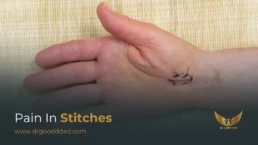Puss Boils: Causes, Symptoms, Treatment, Prevention
Boils on the body is a skin illness that originates in a hair follicle or an oil gland. Initially, the skin in the infection region becomes red, and a painful lump forms. The lump becomes white after four to seven days as pus gathers beneath the skin.
Table of Contents
Toggle- Puss Boils are most commonly found on the face, neck, armpits, shoulders, and buttocks. When one occurs on the eyelid, it is referred to as a sty.
- If numerous blood boils form in a row, this is a sign of a more dangerous illness known as a carbuncle.
Causes of Puss Boils
Most Puss Boils on the skin are caused by a bacterium (staphylococcal bacteria). This germ enters the body by tiny nicks or wounds in the skin or through the hair to the follicle.
These health issues make persons more prone to skin infections:
- Diabetes
- Immune system dysfunction
- Nutritional deficiencies
- Inadequate hygiene
- Exposure to strong chemicals that cause skin irritation
Puss Boils Symptoms
A boil begins as a complex, red, painful lump around the size of a half-inch. The bump softens, grows more extensive, and becomes more distressing during several days. On the top of the boil, a pocket of pus develops quickly. The following are symptoms of severe infection:
- The infection spreads to the skin around the bump. It becomes irritated, uncomfortable, heated, and swollen.
- More boils may form around the first.
- A fever might develop.
- Lymph nodes may swell as a result of this condition.
Carbuncles
A carbuncle is a collection of boils that create an infected region. As opposed to single abscesses, Carbuncles induce a more profound and more severe infection and are more likely to leave a scar. People who have a carbuncle frequently feel poorly and may have a fever and chills.
When to Seek Medical Care?
- You begin to develop a fever.
- Your lymph nodes are enlarged.
- The skin around the boil gets red, and red streaks are visible.
- The agony becomes excruciating.
- The boiling water does not drain.
- A new boil emerges.
- If you have a heart murmur, diabetes, an immune system issue, or use immune suppressing medicines (such as corticosteroids or chemotherapy), you develop a boil.
- Generally, boiling under the armpit does not need immediate medical intervention. However, if you are in bad condition and have a severe illness, you should visit a hospital’s emergency department.
Home remedies for treating Puss Boils
- It would help if you used warm compresses, and the boil treatment should be soaked in warm water, which will alleviate the discomfort and assist in drawing the pus to the surface. However, when the boil reaches a boil, it will rupture with repeated soakings, and it generally happens within 10 days after the onset of the condition. Warm compresses may be made by soaking a washcloth in warm water and squeezing off the excess liquid.
- When the boil begins to drain, wash it with antibacterial soap until all pus has been removed, then clean with rubbing alcohol. Apply a medicinal ointment (topical antibiotic) and a bandage to the affected area. Continue to cleanse the infected area twice a day and apply warm compresses to the site until healed.
- Do not use a needle to puncture the boil, aggravating the illness.
Medical Treatment for Puss Boils
Additional blood tests will be conducted if there are concerns about the severity of the illness. If the infection is severe, the doctor may prescribe antibiotics. If the boil is drained, a culture may be performed to establish the bacteria causing the infection and evaluate whether a suitable antibiotic was administered.
Complications
Bacteria from a boil or carbuncle can occasionally enter your bloodstream and spread to other regions of your body. The spreading illness, also known as blood poisoning (sepsis), can cause diseases deep within your body, including your heart (endocarditis) and bones (osteomyelitis).
Next Steps — Follow-up
Whether you drain the boil at home or have it lanced by a doctor, you’ll need to scrub the infected area two to three times each day until the wound heals. After cleaning, apply an antibiotic ointment and wrap it in a bandage. Contact your doctor if the area becomes red or seems to be infected again.
Preventing Puss Boils
Follow these steps to help avoid boils:
- Wash the clothing, blankets, and towels of a family member who has boils with care.
- Minor skin wounds should be cleaned and treated.
- Maintain good personal hygiene.
- Maintain as much health as possible.
Consult your physician if you have puss boils. A visit to Dr. Gooddeed’s clinic is a good idea during a pandemic, since they have taken all necessary steps.

This article is medically reviewed by Dr. Chandril Chugh, Board-Certified Neurologist, providing expert insights and reliable health information.
Dr. Chandril Chugh is a U.S.-trained neurologist with over a decade of experience. Known for his compassionate care, he specializes in treating neurological conditions such as migraines, epilepsy, and Parkinson’s disease. Dr. Chugh is highly regarded for his patient-centered approach and dedication to providing personalized care.








